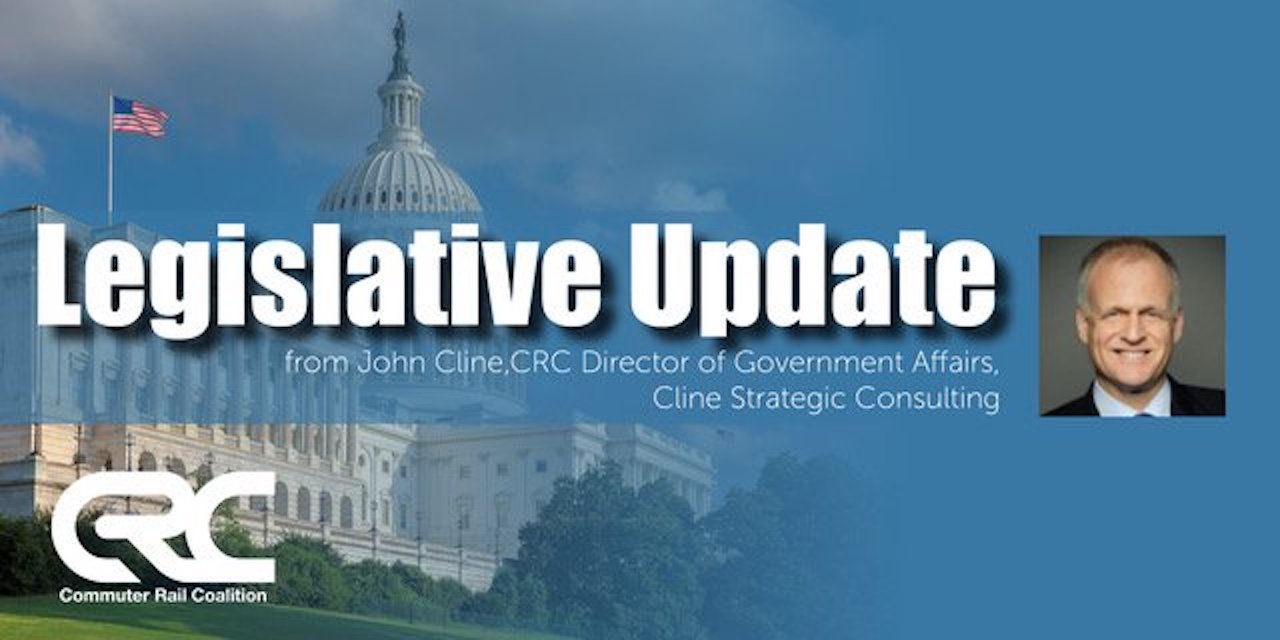
Government Shutdown Prospects, Impacts on USDOT, Modes
Written by John Cline, CRC Director of Government Affairs, Cline Strategic Consulting
It does look like I may eat my words from the 2023 Commuter Rail Coalition (CRC) Summit—held Sept. 18-20 in Chicago—where I predicted we would not see a government shutdown. At least a partial government shutdown this weekend (Sept. 30-Oct. 1) now appears likely, but I still hold out hope.
The odds are not in my favor though.
The challenge facing Republican leadership in the House is that various blocks of conservative members have opposed all their efforts to gather an acceptable bill with all the provisions that make everyone happy.
Currently, the House needs 217 votes to pass a bill. There are currently 221 Republicans and 212 Democrats—with two vacant seats previously held by one Democrat and one Republican. The problem for Republicans last week (week of Sept. 17) was they were down three votes. The Democrats have been down two votes. These members are absent for various reasons—many having to do with health and family matters. Of these absent members, two Republicans and one Democrat have indicated they will be back this week (week of Sept. 24).
Early last week, Republican leadership in the House tried to move the Defense appropriations bill, which typically is fairly easy to pass. They figured if they could get that ball rolling, it might allow for passage of the proposed continuing resolution (CR). However, the vote on the rule allowing the defense bill to proceed to the floor failed by two votes when five Republicans voted against the rule. Later in the week, they tried again with the same result, except this time some of the five Republican no votes were different people.
While the CR never officially moved to a vote, the draft version that was being readied for passage would have cut all program accounts except defense, disaster relief, and veterans by 8%. While the draft CR did not include money for Ukraine or recent disasters, it did include HR 2, the border security and immigration reform bill that passed the House along strict party lines. Of course, this CR was a complete non-starter with Democrats and it proved insufficient for a handful of Republicans.
The House will return today, Sept. 26, following a brief break for Yom Kippur. A pathway for Speaker Kevin McCarthy (R-Calif.) has yet to emerge. It appears that Senate Majority Leader Chuck Schumer (D-N.Y.) will try to lend his hand to the effort, despite the constitutional restriction that revenue measures originate in the House. (There are revenue raising provisions in the Federal Aviation Administration [FAA] Authorization which he would presumably save in order to qualify as a revenue-raising bill. Surely, there would be legal challenges if he pursues this path.)
On Sept. 21, Schumer moved that the Senate take up the House-passed FAA Reauthorization bill (HR 3935) with the intent of stripping out most of the House provisions of the bill and inserting a CR of three months. He would add an extension for the expiring FAA authorization (Sept. 30) and depending on the climate with Republicans in the Senate, perhaps some other provisions (i.e., extension of the Farm Bill, Ukraine assistance).
Even if Schumer were successful in passing his CR, Speaker McCarthy would surely not bring it to the House floor as he would suffer the wrath of his membership and almost certainly be removed from the Speakership. Stay tuned as this saga plays out
If there is a shutdown, the Federal Transit Administration (FTA) will still be operable. FTA now draws its administrative funding for compensation of its 700 employees from the Trust Fund, so it is immune for now to a cutoff in annual funding. The Federal Railroad Administration’s (FRA) 1,000-plus employees are not funded in whole from the trust fund so the U.S. Department of Transportation (DOT) shutdown implementation plan shows 350 employees being furloughed.
FRA identified 472 employees who are critical employees and another 169 who have their compensation from another source not affected by the shutdown. So, if you do have any issues that need to be addressed that are not safety related, you may see some delays. If you have interactions with other DOT modes, you may also see some delays, again depending on the source of their compensation funding.
All will be revealed as this week progresses.
Editor’s Note: The Surface Transportation Board also faces a shutdown. However, Senate-confirmed agency administrators and Senate-confirmed STB members cannot be furloughed during a government shutdown, as their jobs and compensation are provided by statute. And while furloughed employees technically are furloughed without pay, it is customary, upon the end of the shutdown, that Congress votes to provide all furloughed federal employees with back pay. The STB and FRA will retain a skeleton staff to deal with emergencies such as car supply issues, emergency service orders and challenged embargoes.



